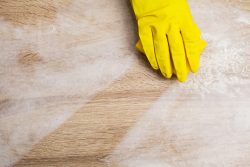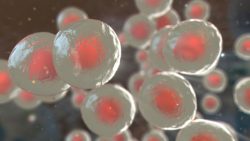 Household dust is an intricate blend of organic material, microbes, and hazardous chemicals. These include biological contaminants such as mold, bacteria, mildew, and dust mites, alongside toxic substances such as mercury, lead, and flame retardants, posing potential health risks. Driven by the harmful impact of cleaners, medications, and environmental pollutants, dust often accumulates over months or years, creating a potent microbial mix.
Household dust is an intricate blend of organic material, microbes, and hazardous chemicals. These include biological contaminants such as mold, bacteria, mildew, and dust mites, alongside toxic substances such as mercury, lead, and flame retardants, posing potential health risks. Driven by the harmful impact of cleaners, medications, and environmental pollutants, dust often accumulates over months or years, creating a potent microbial mix.
Chemicals from household products are released into the air and mix with dust, which settles on surfaces or floors. People can breathe in, swallow, or absorb these tiny dust particles through their skin, affecting their health. Exposure to dust can activate respiratory issues in individuals with allergies or impaired breathing. Such things as pet dander, dust mites, and mold within dust serve as allergens, aggravating airways and triggering inflammation.
In a recent study, researchers directed participants to clean their homes as they typically would before deploying filters to gather dust samples. The study included 32 households, with at least 2 occupants that had resided in the home for at least 23 years and spent the majority of the day there.
The goal was to demonstrate that dust buildup occurs regardless of cleaning habits and to determine if the samples reflected the chemicals present in the households. The results identified 69 out of 76 tested human-made chemicals, such as endocrine disruptors, non-antibiotic drugs, and antibiotics, in at least one household dust sample. Several of these compounds matched medications frequently taken by the residents.
Household dust acts as both a storage site and a pathway for spreading resistant, harmful bacteria. Toxic chemicals in common products and building materials widely contaminate our homes, and these hazardous substances should be substituted with safer options.
To minimize exposure to chemicals in household dust and the surrounding environment, consumers can adopt simple measures to reduce dust levels. These include using a powerful vacuum with a HEPA filter, washing hands regularly, and steering clear of personal care and household products containing potentially harmful chemicals. Replacing as many chemical-based products as possible with natural alternatives can lessen the chemical impact on the dust microbiome.
To view the original scientific study click below:
House dust microbiome differentiation and phage-mediated antibiotic resistance and virulence dissemination in the presence of endocrine-disrupting chemicals and pharmaceuticals





